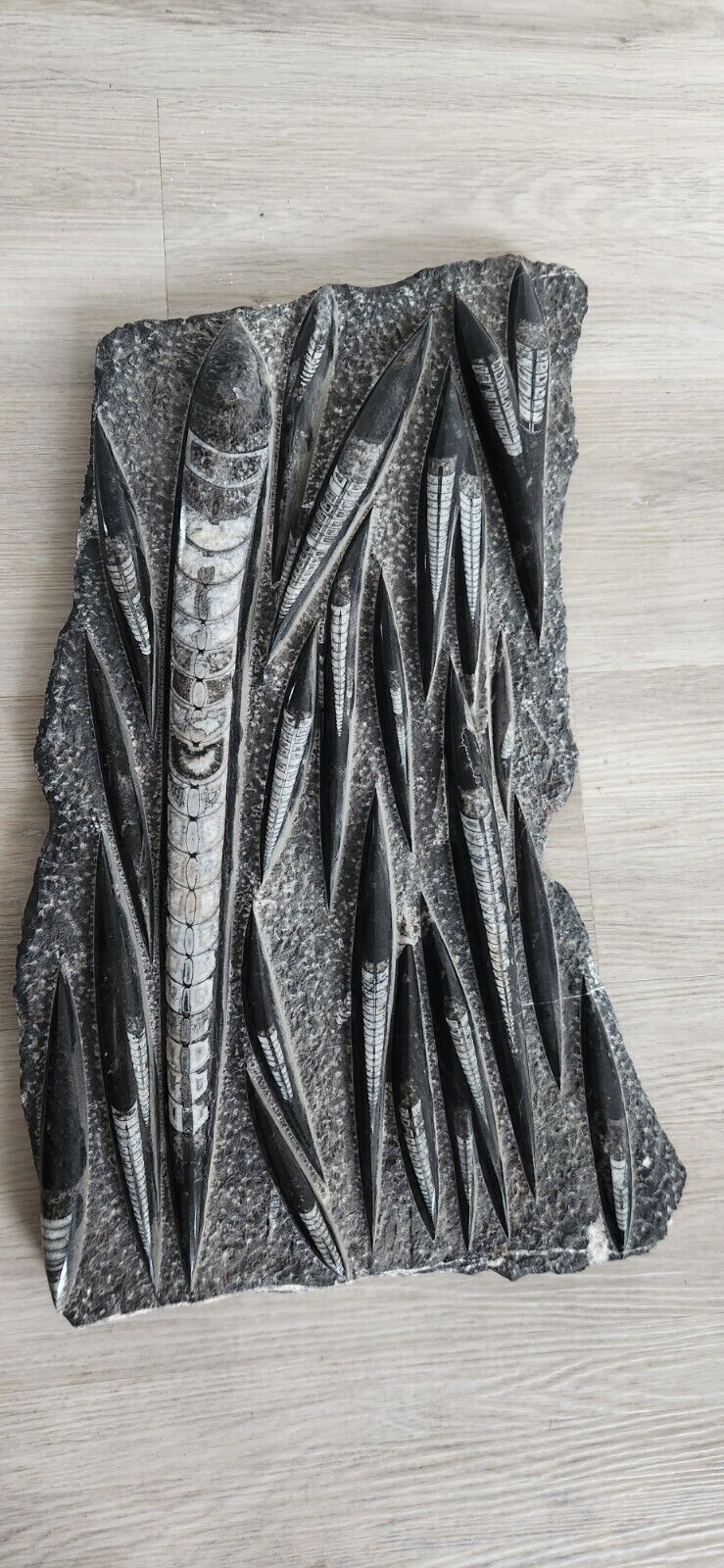-40%
Ammonite has been nicely cleaned, detailed and polished to reveal its' beauty
$ 261.36
- Description
- Size Guide
Description
DimensionsHeight: 5 1/2 Inches; Width: 7 1/2 Inches; Depth: 2 Inches
Description
This Ammonite specimen has been nicely cleaned, detailed and polished in order to reveal its beautiful suture patterns. The entry to its chamber (which was originally encased in stone matrix) has had all that matrix removed, thereby displaying the specimen in a very aesthetic way.
Location: Madagascar Time Period: Cretaceous Measurements: ~ 7-1/2" wide x 5-1/2" tall
More Information
Ammonites are an extinct group of marine animals in the Cephalopoda class. They are invertebrates and are more closely related to coleoids (squids, octopus, and cuttlefish) than they were to the chambered nautilus, even though they looked much more similar to the later. The name Ammonite was derived from "ammonis cornua," translated to mean Horns of Ammon. Ammon was an Egyptian god that was typically depicted wearing ram's horns, whose spiraled shape is similar to that of an Ammonite. Ammonites first appeared in the oceans during the Devonian Period, some 400 million years ago. They died out around 65.5 million years ago along with the dinosaurs.
This is a natural Cleoniceras cleon species Ammonite. Between 145 and 65 million years ago these extinct marine creatures, similar in look to the chambered nautilus, flourished in a warm, shallow sea which covered much of the earth. As the shells of the creatures accumulated on the sea floor, they were buried by sediment and, over the ages, transformed into stone by physical and chemical processes
The chambers of Ammonites were separated by a tissue called septa. One can see the separations of the chambers by means of complete wavy line called a "suture pattern". The suture pattern is the line separating the septa and chambers, and is visible underneath the animals aragonitic shell.












